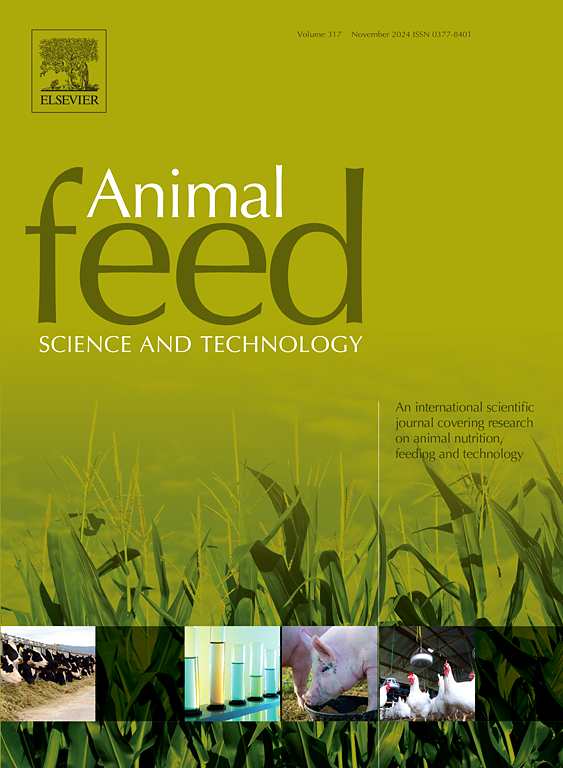Predicting digesta retention times from dietary physicochemical properties in pigs
IF 2.5
2区 农林科学
Q1 AGRICULTURE, DAIRY & ANIMAL SCIENCE
引用次数: 0
Abstract
Dietary physicochemical properties (PP) partially modulate digesta passage along the gastrointestinal tract (GIT). Understanding which dietary PP influence digesta passage is relevant for predicting nutrient absorption kinetics. This study assessed the potential of dietary PP for predicting mean retention time (MRT) and phase segregation of digesta, combining data from four experiments (21 diets, n = 166 pigs, and body weight = 42 ± 14.0 kg) including diets broadly ranging in PP. The MRT of digesta in various GIT segments, measured using similar methodology, was related to dietary PP: rheological parameters (extract viscosity and solid phase moduli plus linear viscoelastic range) and water-binding capacity (WBC). For each GIT segment and digesta phase, PP were selected as independent variables to include in prediction models after a correlation and multicollinearity analysis, followed by MaxR and stepwise variable selection methods. Subsequently, multiple and single regression analyses were performed, including selected PP as predictor variables. The MRT of solid (MRTsolids) and liquid (MRTliquids) digesta, and digesta phase segregation were predicted using model equations with (1) selected PP (full model), (2) WBC only, and (3) extract viscosity only; and calculated vs. observed values were compared. Coefficients of determination (R2) were used to select the best model to predict digesta MRT by GIT segment. Dietary PP were capable of predicting digesta phase segregation in the stomach (R2 = 0.56), largely explained by WBC (R2 = 0.51), and MRTliquids (R2 = 0.26), explained by WBC and rheological parameters. Dietary PP were less effective at predicting MRT in the small and large intestines (R2 = 0.07–0.17), though phase segregation in the cecum was better predicted (R2 = 0.26). Full PP-models, predicted MRTsolids and MRTliquids in all segments more accurately than dietary WBC or extract viscosity alone, whereas WBC was the most important predictor of phase segregation in the stomach. Extract viscosity explained negligible variation in digesta passage. This information can be used in feed formulation to better anticipate how dietary PP influence digestion kinetics.
求助全文
约1分钟内获得全文
求助全文
来源期刊

Animal Feed Science and Technology
农林科学-奶制品与动物科学
CiteScore
6.00
自引率
6.20%
发文量
266
审稿时长
3 months
期刊介绍:
Animal Feed Science and Technology is a unique journal publishing scientific papers of international interest focusing on animal feeds and their feeding.
Papers describing research on feed for ruminants and non-ruminants, including poultry, horses, companion animals and aquatic animals, are welcome.
The journal covers the following areas:
Nutritive value of feeds (e.g., assessment, improvement)
Methods of conserving and processing feeds that affect their nutritional value
Agronomic and climatic factors influencing the nutritive value of feeds
Utilization of feeds and the improvement of such
Metabolic, production, reproduction and health responses, as well as potential environmental impacts, of diet inputs and feed technologies (e.g., feeds, feed additives, feed components, mycotoxins)
Mathematical models relating directly to animal-feed interactions
Analytical and experimental methods for feed evaluation
Environmental impacts of feed technologies in animal production.
 求助内容:
求助内容: 应助结果提醒方式:
应助结果提醒方式:


